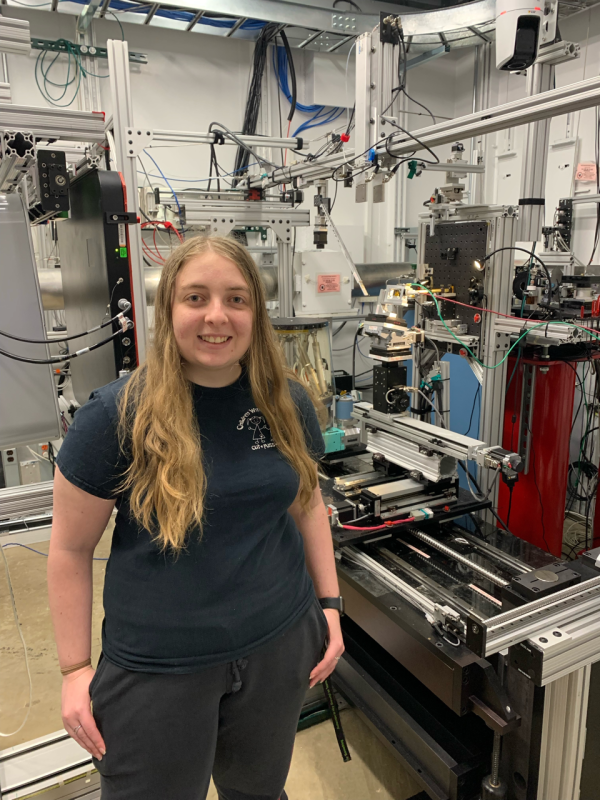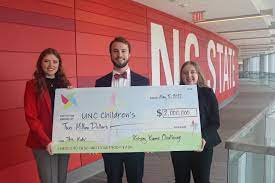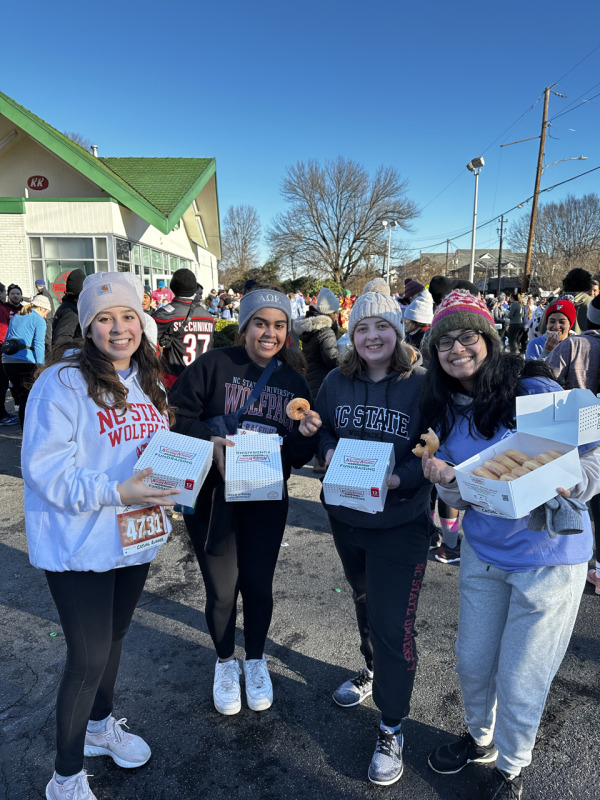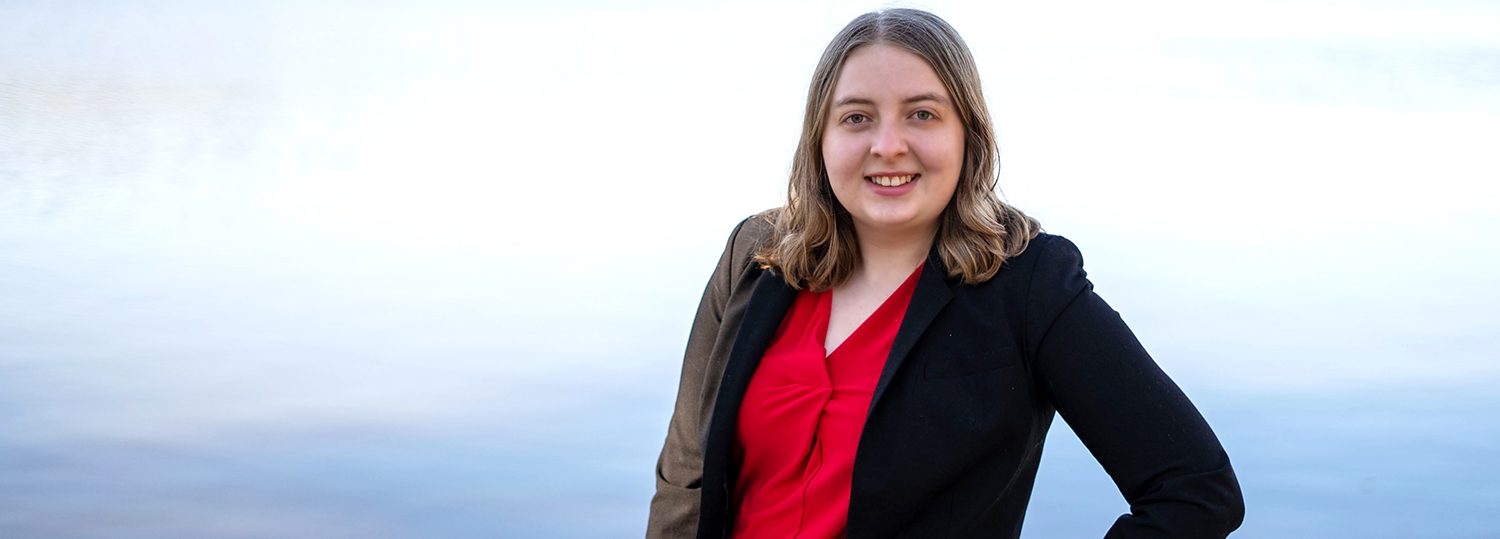Rachel Beall is a fourth-year undergraduate senior majoring in materials science and engineering.
Tell us what drew you to MSE. Did you initially have a different path in mind or was MSE your first pick?
In high school, I knew I wanted to do some sort of engineering but I wasn’t sure exactly what until I attended a Women In Science and Engineering (WISE) meeting. It was at this meeting that a guest speaker happened to be a materials scientist who worked with polymers. That meeting combined with an earlier engineering summer camp I attended where different engineering disciplines were detailed sold me on MSE, and I haven’t looked back!
A goal of mine is to be invited as a guest speaker at the local WISE meetings in my hometown so that I can encourage young girls to go into engineering, specifically MSE.
Rachel Beall

Describe your time in MSE. Include favorite projects, classes, professors, and advisors.
I was eager to start taking MSE courses during my freshman year. I took MSE 201, MSE 255, and MSE 270 in the spring. I instantly fell in love with the concepts of MSE 201. To me, this is a great class because it gives a high-level overview of future MSE coursework we could expect to delve into deeper later. I also enjoyed the lab course MSE 255 because of the variety of experiments.
By my second semester, I decided I wanted to pursue research. This decision was not a new path for me.
In high school, I did bio research, and found that I loved research, but not the bio part. I explored MSE professors and their fields of study and landed on Professor Jacob Jones. I thought his work surrounding the characterization of piezoelectrics with x-ray diffraction (XRD) sounded super cool. I reached out to him, attended a Jones Group meeting, and officially joined the group! I got started right away by meeting with a grad student to design my project.
This all happened in 2020. Like the rest of the world, COVID shut everything down a few weeks later. Lucky for me, I was able to seamlessly pivot my research virtually. I analyzed XRD profiles by using quantitative uncertainty analysis for diffraction (QUAD)—a software that uses Bayesian statistics instead of classical statistics to quantify the error in Rietveld Refinements.
With COVID hitting that year, I wasn’t able to get an internship. Constantly pivoting, I continued my research virtually that summer in the Jones Group, where even now, I am still conducting research with the Jones Group. I typically use my summers to explore additional research opportunities. In the summer of 2021, I was excited to find a virtual computer science internship with the Idaho National Lab because I love coding. However, I am glad that I did that internship because that is where I learned that being a full-time coder just isn’t for me, and if I am coding, I would like it to include some sort of MSE focus. In the summer of 2022, I delved into computational materials research with molecular dynamic simulations using LAMMPS with a virtual internship at Pacific Northwest National Lab in Washington state.
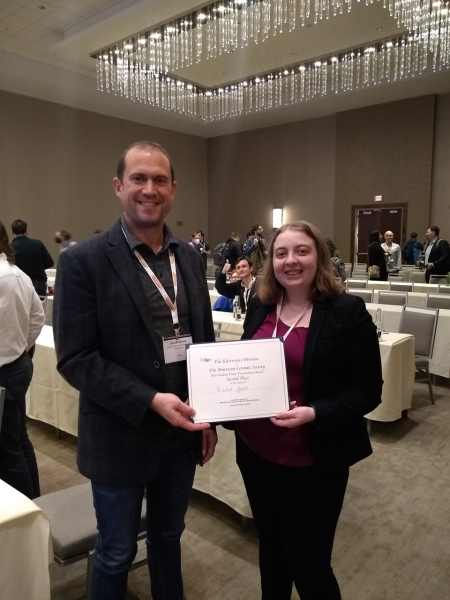
Even though I have worked closely with Dr. Jones and his group, I have never had him as a professor! The Jones Group has helped me grow so much as an undergraduate researcher in MSE, and I am super grateful for the wonderful network of people I met from being in the group. Dr. Jones also encouraged me to attend a conference this spring to present my work, where I won second place in the student poster presentation competition, and met many incredible researchers. That was such an amazing experience.
Through the Jones Group, I was also able to participate in a student trip to collaborate on an experiment at the Advanced Photon Source (APS) at Argonne National Lab in Illinois. This experience was incredible because we were collecting data 24/7, and during our breaks, we were able to see other beamline hutches and the different kinds of experiments that could be performed throughout the facility. The atmosphere was contagious and I felt like I fit right in.
In terms of classes, I really enjoyed MSE 300 (Structure of Materials at the Nanoscale) because of the focus on the characterization and structure of materials, and MSE 460 (Microelectronic Materials) which really opened my eyes to all the microelectronic applications there are in MSE. This is also where I wrote my first mini-lit review which was helpful because I got to explore a topic outside of my research. I also liked MSE 465 (Introduction to Nanomaterials) because it covered so many interesting and relevant topics, and E 304 (Introduction to Nano Science and Technology). The Nano Science course was fascinating to take the semester right after MSE 465. In MSE 465, you are taught about nanoscience from an MSE-focused lens, while in E 304 you are taught about nanoscience in a more general engineering-focused lens about eight different topics—one of which was nanomaterials, and how nanotechnology is all around us.
My advisor freshman year was Professor Yaroslava Yingling and she was super helpful to me as I started my college experience. Many times when I had a few quick MSE-related questions, we would end up having powerful heart-to-heart conversations that really had a positive effect on me. She gave such great advice as finding something to make me happy every day or I might run the risk of burning out, and to seize what I want in life—don’t wait around for it. She was also extremely supportive of my decision to double major in MSE and Computer Science (CS). I did not end up pursuing a double major though, because of the experience I had during my CS internship. My current advisor Hillary Stone is also amazing and has done a great job making the department more organized as well as helping me cater my course schedule as my interests and goals evolve.
Lastly, a big shoutout to Professor Veronica Augustyn. She was my professor for MSE 201, and I loved her teaching style, enthusiasm for the subject matter, and I now have her as my senior design team’s faculty advisor. Although our team project is not related to her work, she always finds time for us and tries to help us in any way she can.
Describe how you anticipate incorporating MSE in your future.
Next year I will be in graduate school working toward my Ph.D. in Materials Science and Engineering. I will be attending the University of Maryland, College Park for my Ph.D., where I will be researching in Dr. Ichiro Takeuchi‘s group. After earning my Ph.D., I hope to work at either a national lab or work in the industry. I cannot imagine leaving the MSE field. A goal of mine is to be invited as a guest speaker at the local WISE meetings in my hometown so that I can encourage young girls to go into engineering, specifically MSE. I would like to provide them with that first introduction to the field, just as a polymer engineer did for me. As someone who grew up loving science fairs, I would love to serve as a volunteer science fair judge with the goal of one day being able to judge entries at the International Science and Engineering Fair (ISEF) to promote young scientists. I also aim to be a mentor to young materials engineers throughout my career. Mentorship is so important to me—I would not be where I am today without mentors. I want to nurture those coming up behind me to provide a stepping stone to their goals.
“Mentorship is so important to me—I would not be where I am today without mentors. I want to nurture those coming up behind me to provide a stepping stone to their goals.”
Rachel Beall
Describe the accomplishment you are most proud of.
This January, I attended the 2023 Electronic Materials and Applications Conference sponsored by the American Ceramic Society. I presented a poster on the project I had been working on for the last two years in the Jones Group: “Time-Resolved In Situ Diffraction Displaying Frequency Dependence of Domain Switching.” Prior to attending, I did not realize that there would be almost no other undergraduates attending the conference—let alone presenting! However, I won second place in the student poster presentation competition! I am so glad I was able to attend this conference, not just to present but also to learn more about the cutting-edge research others are doing in my field, and to network with other researchers. Overall, it was such an incredible experience!
What is your favorite or the coolest thing about MSE?
I think the characterization of materials is so important to better understand and improve the world. I still think it is crazy that we can learn so much about a material on the nano or Angstrom scale through characterization. I remember when I first learned about lattices and crystal structures in MSE 201 I thought it was the coolest thing. I still think so, but have grown to appreciate the characterization that tells us information about the nanostructure of materials like the lattice spacing and if a material is isotropic. That’s one of the reasons I love the XRD work I’ve done in the Jones Group so much—you can learn so many cool things from characterization.
Share a fun fact or your favorite memory at NC State.
I have been actively involved in the Krispy Kreme Challenge since freshman year in 2020. I have had several leadership roles in this organization: I have served as a Fundraising Committee Member, an Executive Assistant, and one of three Race Directors, and now I am the Lead Advisor to the current Race Directors and the General Board of Directors member. I have loved participating in an organization that is completely different from my coursework and research because it works with a different part of my brain. And something I will never forget is reaching our $2M pledge to UNC Children’s Hospital the same year I was a Race Director!
Thanks so much for your time! If someone wants to stay in touch, how can they reach you?
You’re so welcome! Thank you for your time, and if anyone wants to reach me after graduation, they can email me at rachel.beall.mse@gmail.com.
